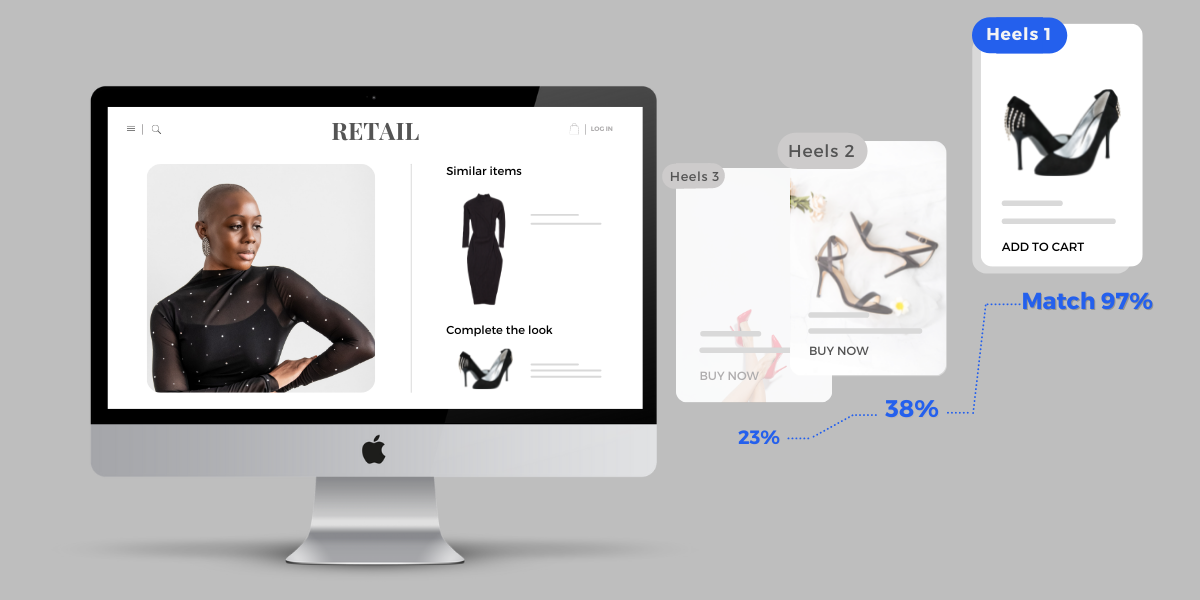Personalization in E-commerce: Expectations Vs. Reality
Froomle is a Business Reporter client.
Expected by consumers but tricky to implement, personalization can take your brand to the next level.
When talking to retailers, the inspiration for personalization is to be using technology that is so advanced that entire websites—not just content and product recommendations—are tailored to the customer. Some companies are known to achieve such advanced one-to-one personalization because its departments share information while also utilizing captured data to better understand its customers. It may seem unrealistic that smaller retailers could ever accomplish the same—but any company can achieve personalization on that level by understanding the current obstacles and the technology that exists to fix them.

Current obstacles to personalization
When it comes to personalization, 57% are willing to share their data with a company if they get something in return, like personalized offers. In addition, 80% of consumers are more inclined to purchase from a shop when they feel like they are being treated as an individual, and if that message is not felt, 52% are likely to shop somewhere else.
Choosing from basic to more advanced options, 89% of digital retailers are investing in personalization, including AI and machine learning, to predict user behavior. But for many companies, personalization is a very tedious process, with no better example than product recommendations—the most common area to be personalized on a web store.
However, these recommendations are typically chosen manually, based on their purpose (“Complete the purchase,” or “Similar items”); placed very low on the page, creating minimal impact; and not updated as frequently as they should be. Worst of all, some solutions that market themselves as using AI are, in reality, only using popularity to choose recommendations. Overall, the intent to deliver is there, but the execution of personalization usually still leaves something to be desired for the consumer and offers lackluster results for the retailer.
Personalization of the future
Clearly, there is a reason for the personalization hype, but not every company has the resources of the major e-commerce players to build their own in-house solution. Luckily, many platforms use AI and machine learning to help automate and optimize personalization.
When choosing a provider, e-commerce companies often face the issue of tech stacks that do not integrate nicely with each other, or budget constraints that limit where they can implement personalization. Either they will choose to personalize just one position on one of their channels, creating minimal impact, or choose different providers to personalize different positions across channels, which are siloed when it comes to data sharing; there is nothing wrong with choosing multiple providers, as the data sets all eventually feed into the same company-wide data lake. With AI, this is incredibly important, because the more data the algorithms can use to learn, the more accurate the personalization will be.
As the personalization industry grows, constant improvements are being made to make these solutions smarter. However, if your provider is not putting in the right amount of effort to improve the underlying techniques, your personalization will not stand up to that of your competitors. Don’t be afraid to challenge your provider to share or explain what goes into its solution.
Ensuring that your platforms have appropriate dashboarding and reporting capabilities will be crucial in understanding how personalization is impacting your business. Having all your data and knowledge in one place will allow for a comprehensive overview of the company to allow for the smartest decision-making. On top of this, deep machine learning techniques can offer additional insights and reveal emerging patterns that are unnoticeable to the human eye but can have a huge impact.
Moving forward
Personalization is an integral part of the customer journey, with consumers expecting it and retailers wanting to exploit it. When evaluating personalization solutions, it is important to ask these questions:
- Where and how does personalization fit into your company strategy and resources? Do you know who your key stakeholders are, and do you have their support?
- Does every platform or solution in your current technology stack share data with the others?
- Do you have enough consolidated data insights on your customers to make smart decisions to consistently improve your customer experience and engagement? If not, will adding this specific solution help you get there?
- Are your providers innovating and staying current on the latest trends in the industry?
Once your company has gone through these questions and defined the current status quo, you can begin your own journey—implementing personalization in the most relevant and effective way for your consumers, using a partner that meets your needs.
—Industry view from Froomle
Learn more about how Froomle’s modular personalization can create quick wins for your business.
Looking for inspiration? Take a look at our most recent case study with Colruyt Group.
This article originally appeared on Business Reporter. Image credits: Header: iStock id:1308926054 Body: Courtesy of Froomle
